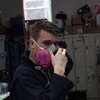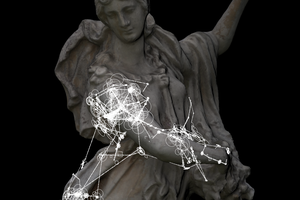Extensive information about the beetle can be found at www.pshb.org. What makes it particularly bad is that it will infest many different types of tree. In Latin, "poly" means "many" and "phagous" means "eat-" so this is a bug that will eat many things. A complete list of known host trees is available at the link.
We have looked into citizen science projects to have people go out and look at trees. The iNaturalist project for this is in our list of links. However it is difficult to send non-experts out to look, since many tree diseases cause similar symptoms.
So - how can you tell, preferably without drilling into the tree, that it might be riddled with galleries a little over a mm across?
How can you stand in the middle of a grouping of dozens of trees, and tell where the bug might be just getting started?
Jump on in.
 Joan Horvath
Joan Horvath


 Owen Trueblood
Owen Trueblood
 Jasmine Brackett
Jasmine Brackett
 Peter Walsh
Peter Walsh
 glgorman
glgorman
Some termites produce noise when chewing. The noise becomes detected by dogs, which can be trained to listen to them and report insect attacks. Possibly they could also be trained to smell them!
With modern speech recognition systems I can imagine that they could be detected and the typical noise of those insects when eating could be recognized (by its frequency, its modulation ...)